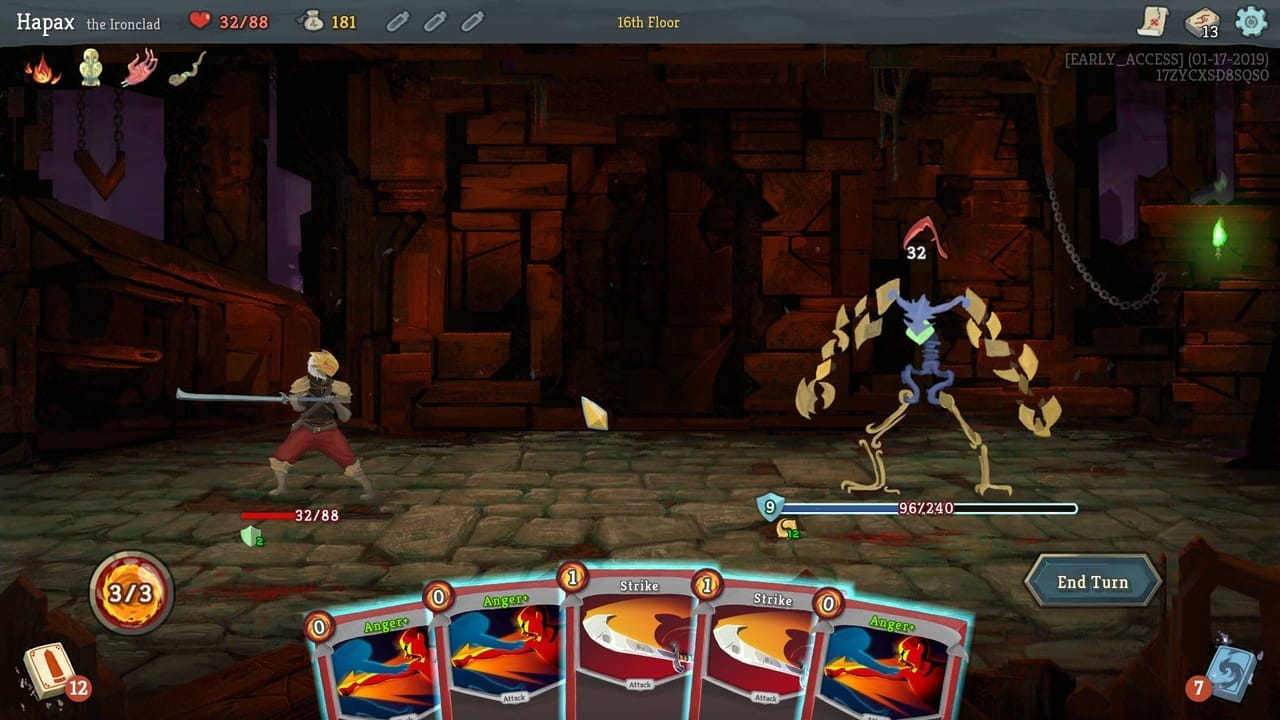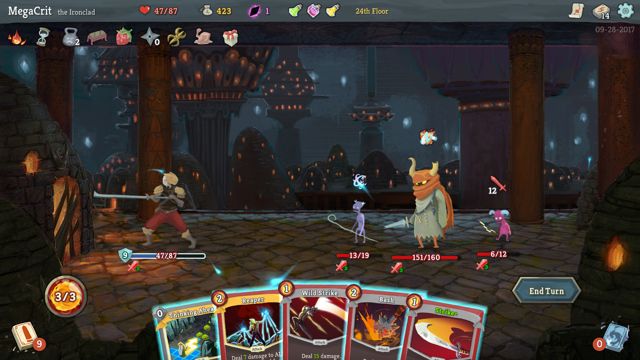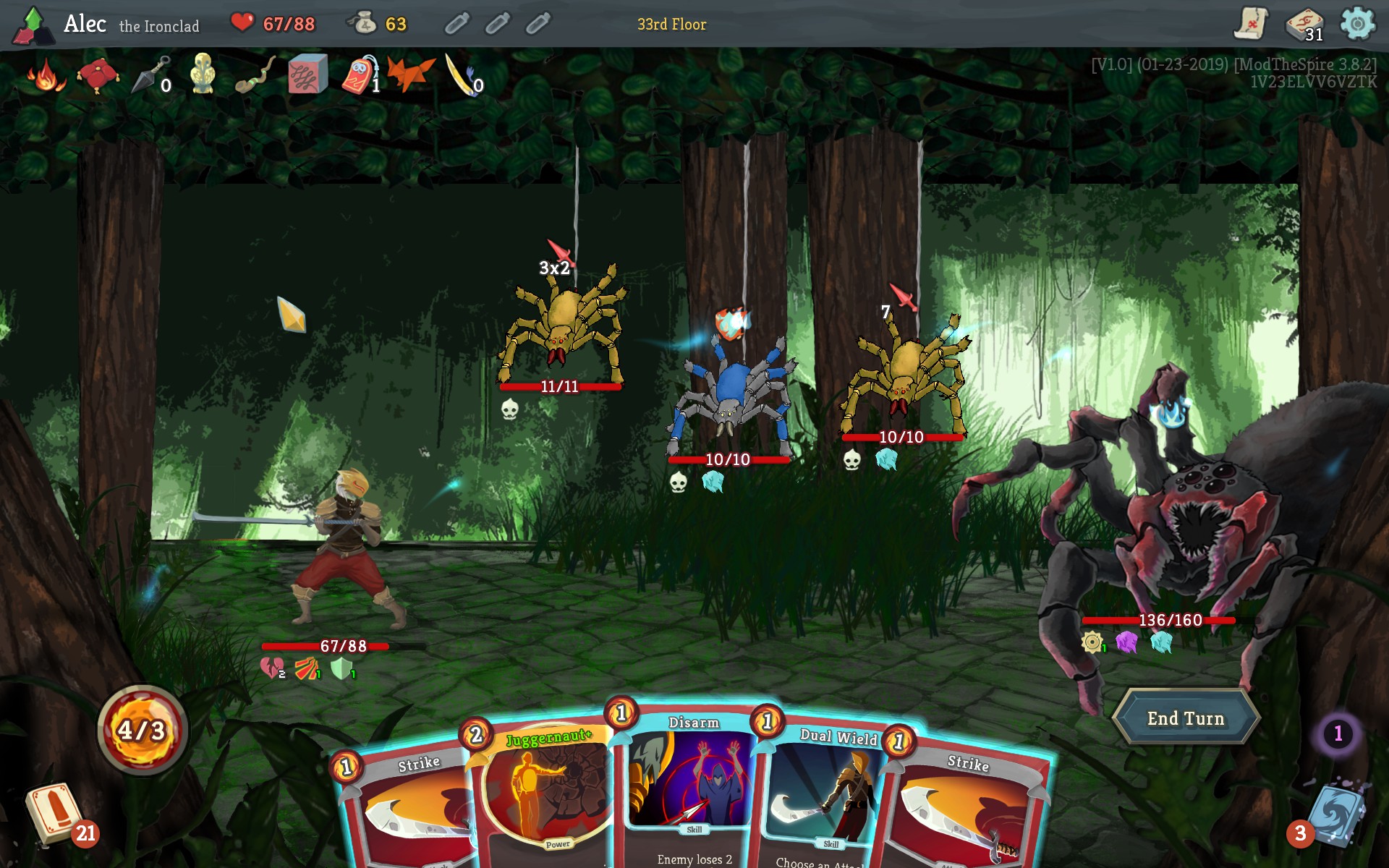

Despite that randomness, it didn’t take long before I started recognizing most of them, which does eventually – in my case after a couple of dozen hours – start to make runs feel a bit too similar.

The enemies are randomly distributed along a simple but amusing dungeon map broken into three main acts, and they get harder and more diverse as you move higher up the Spire.

Because you can almost always see roughly what an enemy will do next – be it attack, defend, or use some sort of buff or debuff – you have the opportunity strategically time your moves to counter their plans. Each one is a tricky puzzle to solve in its own right, with a variety of unique attacks and abilities to play around. As a result, you’re fighting everything from tentacle monsters to creepy slimes to giant bird cultists. The art style mixes a million different influences, clearly inspired by Dungeons & Dragons, Cthulhu, and much more to stand as something all its own. Outside of learning what Relics to pick and which cards to play, it was also fun to figure out Slay the Spire’s monsters and bosses. I loved that many of them have drawbacks to go along with their perk, like Relics that increase the mana you have to play cards at the cost of not being able to heal or gain gold, adding to your pile of difficult decisions. The more you have, the crazier things get. Some are as simple as a permanent attack boost, while others will do things like randomize the cost of every single card you draw.

They can be found in chests and from beating bosses or special elite enemies, and they offer permanent (and often significant) advantages. Outside of cards, you can also find consumable Potions that give you temporary boosts, but the really exciting pickups are the Relics.
SLAY THE SPIRE FREE
For example, the Silent can pick up attacks that stack a poison effect on enemies which you can then multiply or burst with rarer cards, but its card pool also supports a deck built around generating tons of free Shiv attack cards and then buffing them with other effects. While the available characters roughly conform to some general RPG archetype – the Ironclad is the warrior, the Silent is the rogue, and the Defect is kind of like a mage with a bio-mechanical twist – they each have multiple viable play styles you can try to build your deck around. But the simple animations for playing cards are still satisfyingly snappy, and I could take some turns lightning-fast once I got more comfortable. Taking as much pressure-free time as I needed was helpful early on, and pulling up the deck or discard screens even conveniently pauses the action during your opponent's turn. Slay the Spire doesn’t rush you with a timer as you make those tough calls either, so my confidence actually grew from every failed run since. Those little decisions are deceptively important, and there’s rarely an objectively “right” choice, which leaves lots of room to find your personal play style. Knowing when you can afford to take a few points of damage to inflict a few more of your own isn’t a huge deal in the heat of a battle, but it can make the difference in the long run as the Spire wears you down. It can be as simple as when you choose to play an attack card or a defense card.


 0 kommentar(er)
0 kommentar(er)
